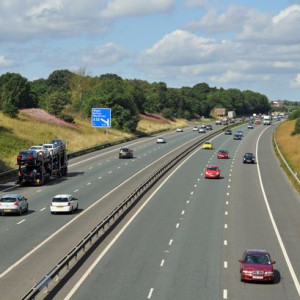Speed limit restrictions impact these specific vehicles when on a motorway, DVSA warns

The speed limit on certain UK roads can be different to what many assume is signposted
19:26, 04 Jun 2025
 Drivers may not realise they could be speeding(Image: corinaldo - stock.adobe.com)
Drivers may not realise they could be speeding(Image: corinaldo - stock.adobe.com)
The Driver and Vehicle Standards Agency (DVSA)[1] has warned drivers to ensure they keep an eye on a legal limit around motorways. Many drivers see the speed limit as the recommended speed, but the agency warn that mentalities like that are "not always safe", not to mention risking fines[2].
They advise that drivers on British roads must not drive faster than the speed limit, which sounds like an obvious warning. That is until you dive into the difrerent speed limits depending on the type of road and type of vehicle, with road users put on alert.
"The speed limit is the absolute maximum - it does not mean it's safe to drive at this speed in all conditions," the Labour Party[3] government website and DVSA warn.
Despite the national speed limit on motorways being 70mph, it can change depending on conditions to do with the weather, or the car itself.
For example, it reduces to 60mph for cars, motorcycles, car-derived vans AND dual-purpose vehicles when towing a caravan or trailer, 10mph less than the official speed limit in effect.
It also reduces to 60mph for buses, coaches, and minibuses (more than 12 metres overall length), as well as goods vehicles with a maximum laden weight of more than 7.5 tonnes in England and Wales.
The speed limit[4] also depends on the number of lanes on the road. It's 60 mph for single carriageways, whereas it's 70 mph for dual carriageways and motorways.
Article continues belowThe restrictions,[5] depending on the type of vehicle apply to all roads in the UK, the official government website stating that the following speed limits apply to all single and dual carriageways with street lights, unless there are signs showing otherwise:
- 30 miles per hour (48km/h) in England, Scotland or Northern Ireland
- 20 miles per hour (32km/h) in Wales
A speed limiter must be fitted on vehicles with more than 8 passenger seats, for example, buses, minibuses, coaches, stretch limousines.
It must also be installed on goods vehicles with a maximum laden weight of more than 3.5 tonnes.
Speed limiters are designed to reduce collisions. They limit the maximum speed of a vehicle by restricting the fuel supply to the engine.
Having a speed limiter may mean that your vehicle cannot reach the speed limit.
Despite the rules in place up and down the country, they can be changed by local councils in certain areas, and these must be clearly signed.
For example:
Article continues below- 20mph zone in a built-up area near a school
- 50mph (rather than 60mph) limit on a stretch of road with sharp bends
References
- ^ Driver and Vehicle Standards Agency (DVSA) (www.chroniclelive.co.uk)
- ^ not to mention risking fines (www.chroniclelive.co.uk)
- ^ Labour Party (www.birminghammail.co.uk)
- ^ The speed limit (www.chroniclelive.co.uk)
- ^ The restrictions, (www.chroniclelive.co.uk)